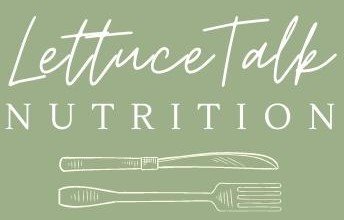What is Insulin Resistance?
You may have heard of the term ‘Insulin Resistance’, but what does it actually mean for your health? Does it mean you are going to develop diabetes? The following blog is going to dive deep into what insulin resistance is and most importantly, how we can improve insulin sensitivity to reduce the risk of progressing to Type 2 Diabetes.
WHAT IS INSULIN RESISTANCE?
So, you may have heard of insulin before. You may associate it with the fact that some people with diabetes need to take it to survive… But what does it actually do in the body?
Insulin is the key responsible for ‘unlocking’ the door to our body’s cells, allowing sugar (glucose) to move from the blood, into the cell. When you are resistant to insulin, this means your body’s cells do not respond as effectively to the insulin ‘key.’ So, what does the body do? Like we would at an unanswered door – knock louder or more frequently. In insulins case, the body produces more of it, hoping that one of the insulin keys will fit and unlock the door to allow the sugar (glucose) to move from the blood, into your cells where it can be used for energy. See diagram 1 for more!
Diagram 1 – Normal Insulin Sensitivity
Diagram 2 – Insulin Resistance
Did you know? Between 75-95% of women with PCOS are insulin resistant!
WHAT ARE THE SYMPTOMS OF INSULIN RESISTANCE?
If you are insulin resistant, you may or may not experience symptoms. Symptoms may include:
Low energy levels
Intense cravings
Weight gain, particularly around your middle
Skin tags
High blood sugars and/or insulin on blood tests
Feeling hungry, even after a meal
Dirty’ looking skin patches, known as acanthosis
Hypoglycaemia.
HOW CAN I TEST FOR INSULIN RESISTANCE?
If you suspect you have insulin resistance or have a higher risk due to a family history, certain medications you are taking or the presence of conditions which increase the risk of insulin resistance, such as Polycystic Ovarian Syndrome, you should be screened. Tests may include:
Fasting Insulin: this measures how much insulin is circulating in the blood after a period of fasting. If high, this may indicate insulin resistance.
Fasting Glucose: this measures how much glucose is circulating in the blood after a period of fasting. If high, this may indicate insulin resistance.
HbA1c: this measures your average blood sugar level over 3 months.
Oral Glucose Tolerance Test: you are required to consume a sugary beverage and then your blood glucose levels are measured, usually over 2 hours, to assess how effectively your body can move glucose (sugar) from the blood, into the cell.
HOMA-IR: measures insulin resistance using your fasting insulin and fasting glucose measures.
Your doctor and dietitian will assist you in interpreting your results.
DOES THIS MEAN I WILL DEVELOP DIABETES?
No! If you are at the early phases of insulin resistance or even pre-diabetes, it is possible to improve your insulin sensitivity and blood sugar (glucose) control to prevent the progression to Type 2 Diabetes.
If you currently have Type 2 Diabetes, it is possible to improve your blood sugar control and insulin sensitivity to the point of ‘remission’ for some people (Lean et al., 2018.) It is important to understand that ‘remission’ is not ‘reversed’ or ‘cured’ and ongoing monitoring and lifestyle changes must be maintained.(Lean et al., 2018)
So, what can you do to improve your insulin sensitivity?
HOW CAN I AVOID DEVELOPING DIABETES?
Managing insulin resistance requires a tailored approach based on your individual medical background, preferences and lifestyle. Some of the changes which may assist you in improving your insulin sensitivity and blood glucose control include:
Prioritise whole grain, low glycaemic index (GI) carbohydrates
Modifying carbohydrate portions and timing: not too much but not too little
Balancing meals with fibre, protein and healthy fats
Be active in a way which feels good for you. This may be a 10 minute walk after each meal or hitting the gym
Include more anti-inflammatory foods such as vegetables, fruits, omega 3 rich fish, whole grains, nuts and seeds
Work on lifestyle factors such as sleep hygiene and stress management
Medical management, such as the use of insulin-sensitising and/or glucose-lowering medications.
So, how can you get started making these changes? Lettuce Talk Nutrition have specific Insulin Resistance, Pre-Diabetes and Type 2 Diabetes nutrition coaching programs which address the above factors (and more), to support you in making positive changes which will support you in managing your blood sugars!
We would LOVE to work with you. Eager to learn more? Book in a FREE discovery call to get started in 2023!
References
LEAN, MICHAEL E. J., LESLIE, WILMA S., BARNES, ALISON C., BROSNAHAN, NAOMI, THOM, GEORGE, MCCOMBIE, LOUISE, PETERS, CARL, ZHYZHNEUSKAYA, SVIATLANA, AL-MRABEH, AHMAD, HOLLINGSWORTH, KIEREN G., RODRIGUES, ANGELA M., REHACKOVA, LUCIA, ADAMSON, ASHLEY J., SNIEHOTTA, FALKO F., MATHERS, JOHN C., ROSS, HAZEL M., MCILVENNA, YVONNE, STEFANETTI, RENAE, TRENELL, MICHAEL, WELSH, PAUL, KEAN, SHARON, FORD, IAN, MCCONNACHIE, ALEX, SATTAR, NAVEED & TAYLOR, ROY 2018. Primary care-led weight management for remission of type 2 diabetes (DiRECT): an open-label, cluster-randomised trial. The Lancet, 391, 541-551.



